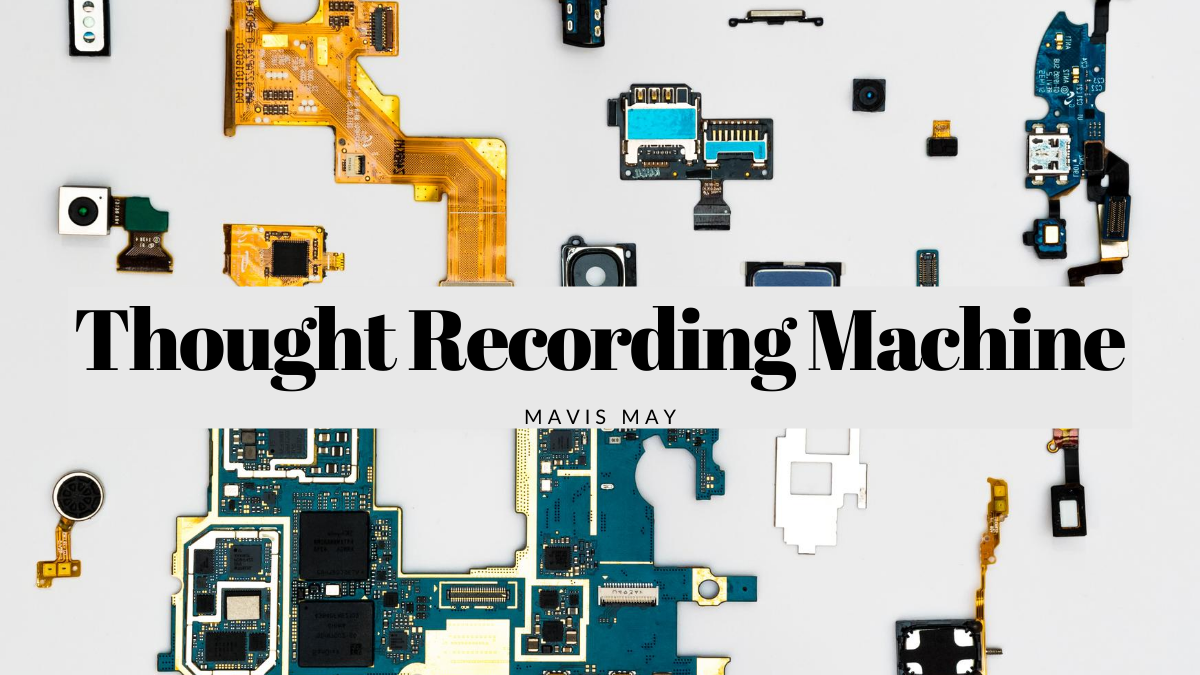Your cart is currently empty!
“Let me set the record straight. It’s against our principles to record someone’s thoughts while they are unconscious,” Dr. Miracle said, trying to explain institutional policies to her surprisingly quick-witted customer-to-be, Mrs. Clementine, who just couldn’t quit the idea of knowing the mind of her daughter.
Mrs. Clementine’s response turned out to be twice as enthusiastic as her willingness to know what her daughter’s deeply lying thoughts were. She said, “She’s sixteen, an underaged child. I’m her mother and I have every right to know what she thinks.”
It became very apparent that Dr. Miracle was getting more and more indignant toward this woman’s irrational desires and, of course, her character. The doctor coupled her distinctive soft speech with Mrs. Clementine’s expectations and hurled all of them away by responding with a higher tone of voice, “I don’t want to disappoint you, but no parent, or anyone else, has an inherent moral or constitutional right to know what their offspring thinks about. That’s not the way the world works, Mrs. Clementine.”
“Fine,” Mrs. Clementine said, “Just remember, there’ll be many other advanced versions of your machine on the market sooner than you think. Dr. Lyndon, from Sperling’s Lab, will soon be presenting his improved version of on-screen thought visualization.”
Dr. Miracle formulated her point cynically, but respectfully, and said, “Best of luck.”
Mrs. Clementine’s face turned into an ugly form of disgust, like that of a person who judges something without understanding, or without having a desire to understand what their opponent says, before standing up and storming off outside.
“Unbelievable.” It was the only thing Dr. Miracle could come up with once Mrs. Clementine left her office. She approached the small room that intertwined with her main office. She unlocked the door and went inside. In the room, she kept her most sacred creation: a thought recording machine.
She was just a twelve-years-old when something clicked in her brain and her idea grew into something of glimmering value. Ever since, she’d been working on her dream to invent the first machine that could record the thoughts of any living creature. The mission was still a work in the process, but she made groundbreaking progress that attracted curious mind-explorers like Mrs. Clementine.
The machine was an enormous, rectangular radio-like device that looked like a cardiogram machine, crowded with an inordinate number of wires on the frontal side. These wires wore colorless round patches on their second extremities, the sides not plugged into the device. Before reaching this prototype, the machine used to look like a small metronome with few wires chaotically located on different sides.
The first experiments included groups of people who were about to undergo brain surgery of any kind. Dr. Miracle put electrodes on their skulls to observe the activity of several specific brain cells. Over many trials she improved by her machine so that it records not only the dreams of unconscious people, but the thoughts of those who are awake.
As a result of Dr. Miracle’s restless attempts, people were able to access to their dreams. A movie theater in the city center was specifically designed for people to screen the dreams obtained from the machine. Because of this innovation, naturally, there was a huge demand on the dreams of celebrities and well-known people.
For instance, the drummer of a famous “unnamed” band premiered one of his dreams. The entire audience grew silent when they saw him delivering carrots to adorable bunnies. The drummer himself was overwhelmingly surprised and triggered by his dream. He had no idea why the bunnies were so important to him but decided to donate lots of money to a charitable organization aimed toward the preservation of bunnies. Many fans followed his example and also donated money to bunnies.
The price of these movie tickets triples if the person himself had yet to see their unconscious phantasmagoria before the premiere hit. Because of this, Dr. Miracle no longer had interest in dreams and fantasies, and currently focused on visual thought translations of the conscious.
The deeper she went into her endeavors, the more interesting things happened. Dr. Miracle was approached with rather absurd proposals. A while ago, a well-respected politician asked her to record thoughts of an young activist who surpassed him in debates.
He told her, “I’ll make it work. I can bribe someone from his circle to slip something in his drink, and while his out, we’ll record his dreams and thoughts without him knowing. The public must know what kind of hypocrite he is. Everything he says, his entire rebellion, is a facade: a beautiful, youthful box of lies he sells to the youngsters. He isn’t a revolutionary, he’s just an I-M-P-O-S-T-O-R!” The politician was offhandedly pathetic, like a satirical cartoon character with a very small semblance of power.
Dr. Miracle would never agree to something of this kind.
Surprisingly, even once a graphic designer begged her for help. Everything he said channeled nothing specific, however, Dr. Miracle understood the designer’s implications. The man was suffering from artist block, and was desperate to know what his colleague’s next steps were.
The designer said, “He’s my competition and he’s always coming up with fresh and fruitful ideas. I’m stuck. Why? I wish my imagination as fertile as that.” The only word that can describe his idiosyncratic mannerisms was sorrowful. He was not an exception either.
Dr. Miracle doubtlessly slammed the door of her capabilities right in front of him.
The most recent offer she received was from a huge technology company proposing to acquire the thought recording machine patent for an obscene amount of money. Dr. Miracle herself, despised the idea of turning her most sacred invention turning into an average product aimed to be consumed massively and extensively. The consumerist society wasn’t ready to excessively to have control of someone else’s thoughts, dreams, and fantasies.
For certain, her invention would be used for illegal activities without her permission if readily available. Some nameless investor or, even worse, a high-ranking official will abuse its power. So, she pondered over the tone and attitude proper for the response she had yet to make to the company, mocking every marketing trick that would help sell as many thought recordings machines as possible. If she agreed to the offer, she’d be the sole catalyst of contributing to the commercialization a celestial thought. The following mottos and phrases would have been all over the television and billboards:
“Ever wonder what your wife thinks about when she is mad and won’t tell you why? Buy our unique machine and bring the unknown to an end for once and for all.”
“Are you struggling with an unrequited love and you don’t know what is your problem? You need this machine.”
While she began her reply, she thought about what started it all, her desire that pushed her to this invention. Dr. Miracle wanted only to reduced biased research results, and make the jobs of evolutionary biologists, statisticians, and scientists in general, easier. This invention had the power to change science profoundly, beyond herself and her small contribution. Everyone else, unfortunately, had something very different in mind.
One response to “Thought Recording Machine”
-
Very interesting concept! Can wait to see the next part of the story…


Comment